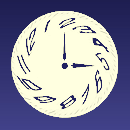

For SIX YEARS we've been trying to get Circadian Rhythm Sleep Disorders added to the NIH website. There has been no action. At the June 2018 meeting the SDRAB voted to send a letter in support of this effort, but it was never sent. A letter is attached.
Many people with severe Circadian Rhythm Sleep Disorders cannot function on a normal schedule. Many can't hold a job. Others force themselves to do so, becoming sleep deprived, and having long term effects on their health, including cancer, heart disease, diabetes, and other chronic illnesses. Treatment, when attempted, is often ineffective.
But people, even doctors, do not recognize the disorder and do not understand its severity. People who have not experienced CRDs CANNOT understand the difficulty we face in trying to sleep against our clocks. "Just go to bed earlier" doesn't work. The public looks to the NIH website to validate claims of such disorders - but they are not listed.
I keep hearing from distraught patients whose family members do not accept that these are real disorders, or that treatments are often ineffective. They ask what they can show their family to help convince them. We would like to refer them to the NIH website - but cannot.
An estimated 1 in 600 adults has DSPD1 - three times as many as have narcolepsy. Narcolepsy is mentioned in every list of sleep disorders on the NHLBI website. Circadian Rhythm Sleep Disorders: not once.
Our members suffer twice: once from the disorder itself, and again because people are unaware of these disorders and view the sufferers as just lazy.
We raised the issue again at the September 2013 meeting. Same response.
In 2014 we started a letter-writing campaign to get these disorders listed. We got a response stating (among other things) "We will update the community on new online content from the NHLBI on sleep disorders at the next regular in-person meeting of the NIH Sleep Disorders Research Advisory Board." That never happened.
Circadian Sleep Disorders Network offered to write the articles. Dr Phyllis Zee offered to write the articles.
We continued to remind Dr Twery and the SDRAB in 2015 and 2016 and 2017 and 2018.
At some point we were told funding had been cut, and additions to the website would not be possible. When funding increased again we were told that the entire website was being redesigned, and the changes would be part of the redesign. The website has been redesigned. Circadian Rhythm Sleep Disorders is still not mentioned.
At the last SDRAB meeting in June 2018 the board voted to formally send a letter to the powers that be in support of adding Circadian Rhythm Sleep Disorders to the NHLBI website.
I drafted such a letter and sent it the board as it had been constituted in June. Dr Twery wanted to make some changes and then send it to Dr Strollo, who had been board chair. The changes were never proposed. Dr Strollo's term of office has now expired, along with that of six other board members. Suddenly it wasn't clear who would even vote to accept the letter or any proposed changes. In my opinion, the people who were on the SDRAB at the time of the last meeting, when the vote was taken, should have finished up and sent the letter last summer. So we have yet another delay.
Dr Twery proposed to discuss it at the January 2019 meeting. Here we are. What other choice do we have?
This is not a big project. We keep hearing "Yes it will happen," but it hasn't happened. The entire website has been redesigned while we are waiting for a few articles to be added. Where is the hang-up occurring?
Act now. Please don't put this off for yet another six months.
In thinking about the final text, and how that would be incorporated into the NHLBI website's standardized framework, we have concluded that we need SEPARATE entries for DSPD, ASPD, N24, and ISWD, for the following reasons:
Please add Circadian Rhythm Sleep Disorders to the NHLBI website, as discussed below.
WHEREAS half a million American adults (and many more teens) suffer from these disorders1;
WHEREAS our families, employers, even some doctors do not recognize these disorders and treat us as just being lazy;
WHEREAS the NHLBI web site provides information and guidance on narcolepsy, sleep apnea, insomnia, restless legs syndrome - but not Circadian Rhythm Sleep Disorders - despite that three times as many adults have Circadian Rhythm Sleep Disorders as have narcolepsy;
WHEREAS we have requested for six years that Circadian Rhythm Sleep Disorders be added to the NHLBI web site, and been repeatedly assured that it would be added;
WHEREAS sleep deprivation has been shown to increase the risk of cancer, heart disease, diabetes, and other chronic illnesses, yet many people are pushing themselves into sleep deprivation because the public and even many in the medical community do not understand the full impact of disordered circadian rhythms on sleep;
WHEREAS people come to the NIH website looking for guidance and information, and lack of inclusion on the NIH website suggests that these disorders need not be taken seriously; and since other government health websites look to the NHLBI site for guidance on what to cover, this creates a multiplier effect;
WHEREAS your coverage of these major disorders would help patients to obtain proper treatment, accommodations, and respect;
THEREFORE the Sleep Disorders Research Advisory Board urgently requests that Circadian Rhythm Sleep Disorders be added to the NHLBI web site. Specifically:
Circadian Sleep Disorders Network
4619 Woodfield Rd
Bethesda, MD 20814
E-mail: csd-n@csd-n.org
Web site: www.CircadianSleepDisorders.org